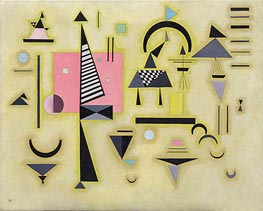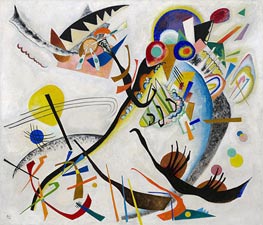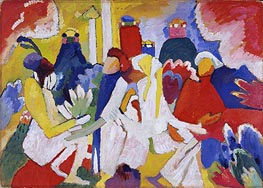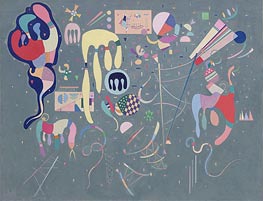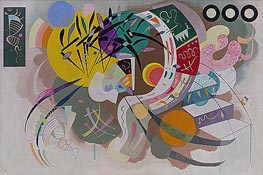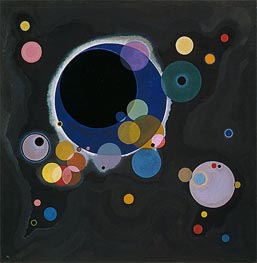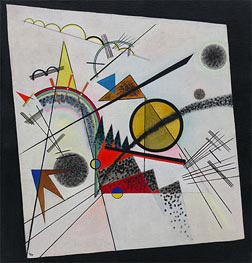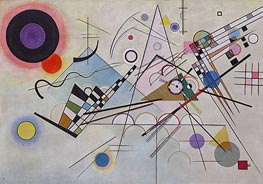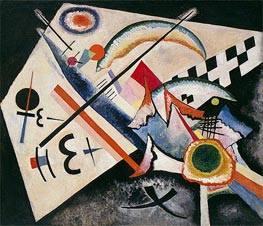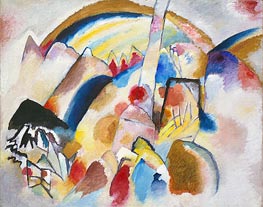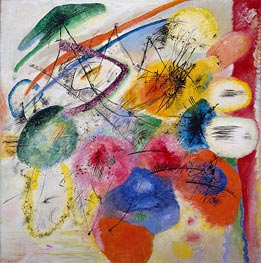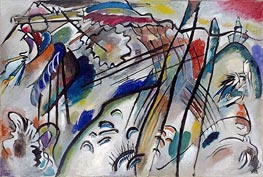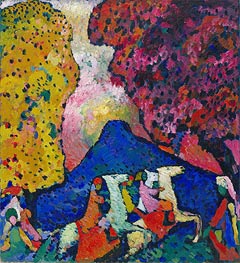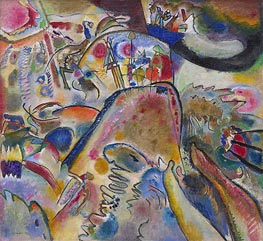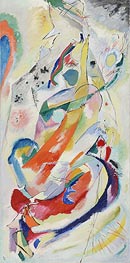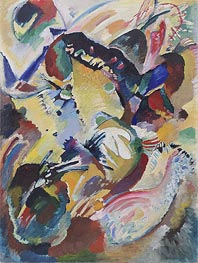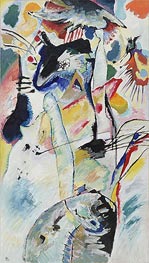Abstract Paintings - Page 14
Abstract painting is a style of art that emerged in the early 20th century as a response to the traditional forms of representation. It is characterized by non-representational forms, colors, and shapes that challenge the viewer's perceptions of reality. The movement was inspired by various sources, including Primitivism, Futurism, Cubism, and Expressionism.
Abstract painting is considered to be one of the most significant art movements of the 20th century and continues to influence contemporary art. It is a form of non-representational art, meaning that it does not depict recognizable objects or scenes from the natural world. Instead, it uses color, shape, texture, and form to create an emotional response in the viewer.
The origins of abstract painting can be traced back to the late 19th and early 20th centuries, when artists began to experiment with new forms of expression that went beyond the traditional representational style. Early pioneers of abstract art include Wassily Kandinsky, Kazimir Malevich, and Piet Mondrian.
One of the key features of abstract painting is the use of color as an expressive element in its own right. Artists such as Mark Rothko and Joan Mitchell used color in a highly emotional and expressive way, creating large, monochromatic canvases that sought to evoke a sense of spiritual transcendence.
Abstract Expressionism is another important offshoot of abstract painting. It emerged in the United States in the 1940s and 1950s and was characterized by gestural brushwork and the use of large canvases. Artists such as Jackson Pollock, Willem de Kooning, and Franz Kline became synonymous with this movement, which was seen as a highly individualistic and expressive form of art.
In conclusion, abstract painting is a diverse and complex art form that continues to evolve and inspire artists. Despite its non-representational nature, it has a rich history and has had a profound impact on the development of modern art.
Abstract painting is considered to be one of the most significant art movements of the 20th century and continues to influence contemporary art. It is a form of non-representational art, meaning that it does not depict recognizable objects or scenes from the natural world. Instead, it uses color, shape, texture, and form to create an emotional response in the viewer.
The origins of abstract painting can be traced back to the late 19th and early 20th centuries, when artists began to experiment with new forms of expression that went beyond the traditional representational style. Early pioneers of abstract art include Wassily Kandinsky, Kazimir Malevich, and Piet Mondrian.
One of the key features of abstract painting is the use of color as an expressive element in its own right. Artists such as Mark Rothko and Joan Mitchell used color in a highly emotional and expressive way, creating large, monochromatic canvases that sought to evoke a sense of spiritual transcendence.
Abstract Expressionism is another important offshoot of abstract painting. It emerged in the United States in the 1940s and 1950s and was characterized by gestural brushwork and the use of large canvases. Artists such as Jackson Pollock, Willem de Kooning, and Franz Kline became synonymous with this movement, which was seen as a highly individualistic and expressive form of art.
In conclusion, abstract painting is a diverse and complex art form that continues to evolve and inspire artists. Despite its non-representational nature, it has a rich history and has had a profound impact on the development of modern art.
page 14 of 16
SKU: KAW-16101
Wassily Kandinsky
Original Size: 81 x 100 cm
Solomon R. Guggenheim Museum New York USA
Wassily Kandinsky
Original Size: 81 x 100 cm
Solomon R. Guggenheim Museum New York USA
SKU: KAW-16100
Wassily Kandinsky
Original Size: 81 x 100 cm
Solomon R. Guggenheim Museum New York USA
Wassily Kandinsky
Original Size: 81 x 100 cm
Solomon R. Guggenheim Museum New York USA
SKU: KAW-16099
Wassily Kandinsky
Original Size: 120.6 x 140 cm
Solomon R. Guggenheim Museum New York USA
Wassily Kandinsky
Original Size: 120.6 x 140 cm
Solomon R. Guggenheim Museum New York USA
SKU: KAW-16098
Wassily Kandinsky
Original Size: 69.5 x 96.5 cm
Neue Pinakothek Munich Germany
Wassily Kandinsky
Original Size: 69.5 x 96.5 cm
Neue Pinakothek Munich Germany
SKU: KAW-16097
Wassily Kandinsky
Original Size: 89.2 x 116 cm
Solomon R. Guggenheim Museum New York USA
Wassily Kandinsky
Original Size: 89.2 x 116 cm
Solomon R. Guggenheim Museum New York USA
SKU: KAW-16096
Wassily Kandinsky
Original Size: 129.2 x 194.3 cm
Solomon R. Guggenheim Museum New York USA
Wassily Kandinsky
Original Size: 129.2 x 194.3 cm
Solomon R. Guggenheim Museum New York USA
SKU: KAW-16095
Wassily Kandinsky
Original Size: 97 x 162 cm
Solomon R. Guggenheim Museum New York USA
Wassily Kandinsky
Original Size: 97 x 162 cm
Solomon R. Guggenheim Museum New York USA
SKU: KAW-16094
Wassily Kandinsky
Original Size: 140.3 x 140.7 cm
Solomon R. Guggenheim Museum New York USA
Wassily Kandinsky
Original Size: 140.3 x 140.7 cm
Solomon R. Guggenheim Museum New York USA
SKU: KAW-16093
Wassily Kandinsky
Original Size: 97.5 x 93.3 cm
Solomon R. Guggenheim Museum New York USA
Wassily Kandinsky
Original Size: 97.5 x 93.3 cm
Solomon R. Guggenheim Museum New York USA
SKU: KAW-16092
Wassily Kandinsky
Original Size: 140 x 201 cm
Solomon R. Guggenheim Museum New York USA
Wassily Kandinsky
Original Size: 140 x 201 cm
Solomon R. Guggenheim Museum New York USA
SKU: KAW-16091
Wassily Kandinsky
Original Size: 100.5 x 110.6 cm
Solomon R. Guggenheim Museum New York USA
Wassily Kandinsky
Original Size: 100.5 x 110.6 cm
Solomon R. Guggenheim Museum New York USA
SKU: KAW-16090
Wassily Kandinsky
Original Size: 140.3 x 200.3 cm
Solomon R. Guggenheim Museum New York USA
Wassily Kandinsky
Original Size: 140.3 x 200.3 cm
Solomon R. Guggenheim Museum New York USA
SKU: KAW-16089
Wassily Kandinsky
Original Size: 117.5 x 140 cm
Solomon R. Guggenheim Museum New York USA
Wassily Kandinsky
Original Size: 117.5 x 140 cm
Solomon R. Guggenheim Museum New York USA
SKU: KAW-16088
Wassily Kandinsky
Original Size: 129.4 x 131 cm
Solomon R. Guggenheim Museum New York USA
Wassily Kandinsky
Original Size: 129.4 x 131 cm
Solomon R. Guggenheim Museum New York USA
SKU: KAW-16087
Wassily Kandinsky
Original Size: 111.4 x 162 cm
Solomon R. Guggenheim Museum New York USA
Wassily Kandinsky
Original Size: 111.4 x 162 cm
Solomon R. Guggenheim Museum New York USA
SKU: KAW-16086
Wassily Kandinsky
Original Size: 95.2 x 150 cm
Solomon R. Guggenheim Museum New York USA
Wassily Kandinsky
Original Size: 95.2 x 150 cm
Solomon R. Guggenheim Museum New York USA
SKU: KAW-16085
Wassily Kandinsky
Original Size: 106 x 96.6 cm
Solomon R. Guggenheim Museum New York USA
Wassily Kandinsky
Original Size: 106 x 96.6 cm
Solomon R. Guggenheim Museum New York USA
SKU: KAW-16084
Wassily Kandinsky
Original Size: 97.5 x 131.2 cm
Solomon R. Guggenheim Museum New York USA
Wassily Kandinsky
Original Size: 97.5 x 131.2 cm
Solomon R. Guggenheim Museum New York USA
SKU: KAW-16083
Wassily Kandinsky
Original Size: 110.2 x 119.4 cm
Solomon R. Guggenheim Museum New York USA
Wassily Kandinsky
Original Size: 110.2 x 119.4 cm
Solomon R. Guggenheim Museum New York USA
SKU: KAW-16082
Wassily Kandinsky
Original Size: 99.5 x 99 cm
Museum of Modern Art New York USA
Wassily Kandinsky
Original Size: 99.5 x 99 cm
Museum of Modern Art New York USA
SKU: KAW-16081
Wassily Kandinsky
Original Size: 175 x 144.6 cm
Museum of Modern Art New York USA
Wassily Kandinsky
Original Size: 175 x 144.6 cm
Museum of Modern Art New York USA
SKU: KAW-16080
Wassily Kandinsky
Original Size: 162.5 x 80 cm
Museum of Modern Art New York USA
Wassily Kandinsky
Original Size: 162.5 x 80 cm
Museum of Modern Art New York USA
SKU: KAW-16079
Wassily Kandinsky
Original Size: 162.6 x 122.7 cm
Museum of Modern Art New York USA
Wassily Kandinsky
Original Size: 162.6 x 122.7 cm
Museum of Modern Art New York USA
SKU: KAW-16078
Wassily Kandinsky
Original Size: 162.5 x 92 cm
Museum of Modern Art New York USA
Wassily Kandinsky
Original Size: 162.5 x 92 cm
Museum of Modern Art New York USA
